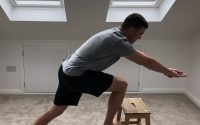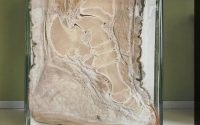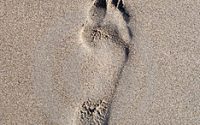Foot Mechanics – Part 3: The Back Foot
So far in this series we have looked at an overview of motions in the STJ, TCJ and MTJ. We also had a more detailed look at the Front Foot Mechanics in Gait. Part 3 will look in more detail at what is going on to create the back foot motions.
First thing to note is the change in driver from ground reaction force for the front foot, to a mass and momentum driver for the back foot. This is important as it is what guides us as to what the bones are doing, which ultimately leads us to what the joints are feeling. I had a bit of a complaint about not including the big toe in these posts, but they are already very long and I just can’t get everything in!! The plan was always to deal with the first ray and big toe in their own post, so keep reading
Remember we are talking about a right leg/foot.
Talo-Crural and Sub-Talar Joint
The reason I put them together is the joint feelings are the same and it will save repeating myself and keeping the post a reasonable length!! These motions are first because the mass and momentum driver will come from the opposite leg swinging through. This means the drive will be coming from the top down with the TCJ being the first to feel its effects.
The 2 main motions that seem to drive everything are firstly, the upward pull, lifting the foot off the floor. Secondly, the transverse plane drive working its way down the leg from the pelvis, through the femur, tib/fib and into the foot. The sagittal plane motion it’s interesting because it is at the EOR of dorsiflexion. However, the motion will be plantar flexion as the leg is being lifted, pulling the tibia away from the talus.
In the frontal plane the inversion we can see happen is being driven by the transverse plane drive of the lower limb as a whole. For the right leg, the pelvis will drive the leg to rotate to the right. This right rotation will help supinate the foot creating inversion in the TCJ. At the same time the right rotation of the tib/fib quicker than the talus will create internal rotation.
TCJ/STJ Summary
- Sagittal Plane – Plantar flexion…both bones anteriorly tilting, distal faster (mainly from superior drive of the tibia)
- Frontal Plane – Inversion, both bones tilting right distal faster
- Transverse Plane – Internal rotation…both bones rotating right, proximal faster
Mid-Tarsal Joint
Like when it is a front foot, the MTJ motions will be driven from the rear foot. We know the rear foot is plantarflexing, inverting and internally rotating…so what does that mean for the MTJ? Well, in the sagittal plane the overriding influence will be the lifting of the leg as the body tries to pull the foot off the floor. This, for the same reasons as the TCJ/STJ will create plantar flexion via the talus being dragged superiorly away from navicular (remember for MTJ we will think of the talo-navicular joint).
In the frontal plane, with the forefoot being fixed on the floor the inversion at the rear foot will see the talus tilting to the right, this will create eversion at the MTJ.
Finally, in the transverse plane the right rotation drive down the leg is the primary driver. The talus will rotate to the right, helping to supinate the foot as a whole and drive the MTJ into adduction.
MTJ Summary
- Sagittal Plane – Plantar flexion…both bones anteriorly tilting, distal faster (mainly from superior drive of the tibia)
- Frontal Plane – Eversion, both bones tilting right proximal faster
- Transverse Plane – Adduction…both bones rotating right, proximal faster
Summary
Well, at least I managed to keep it a little more concise this time!! Helps having gone through some of the previous posts, as our understanding builds we can move more quickly through the information
Physiobloggger


